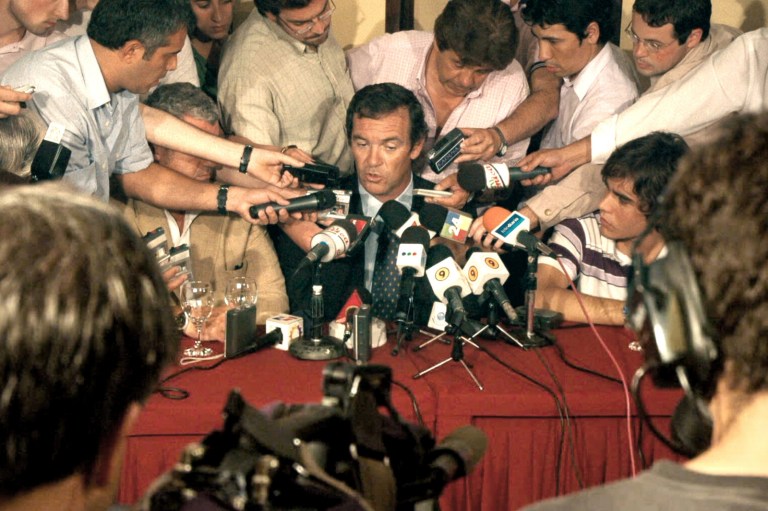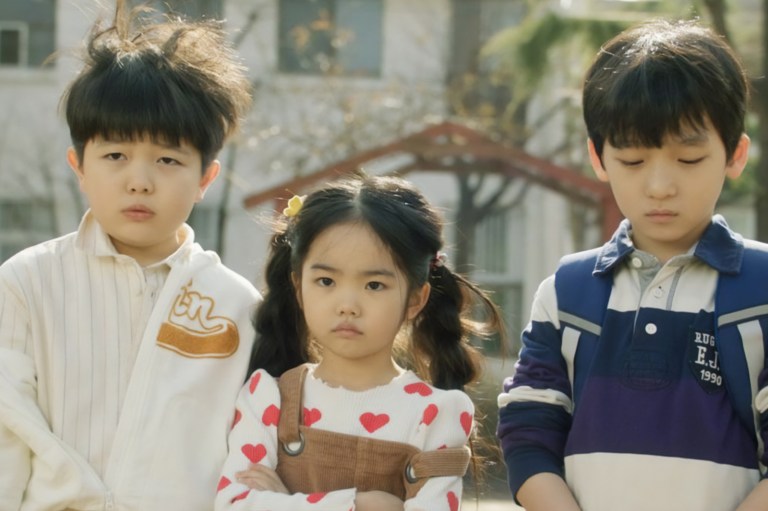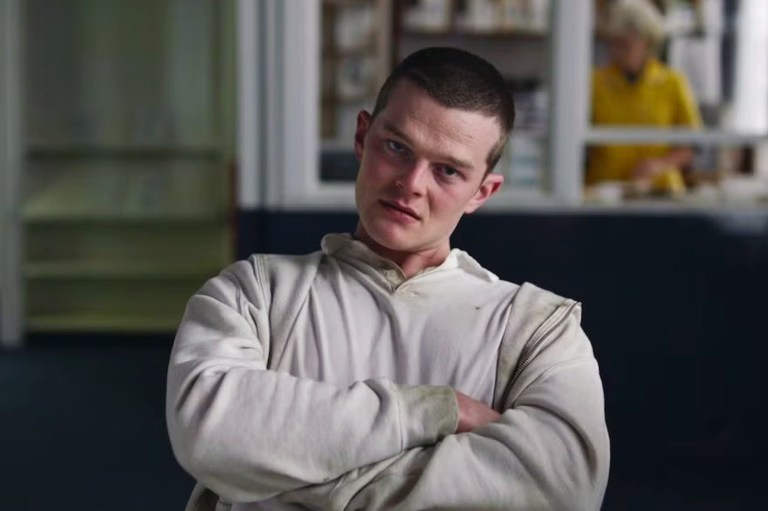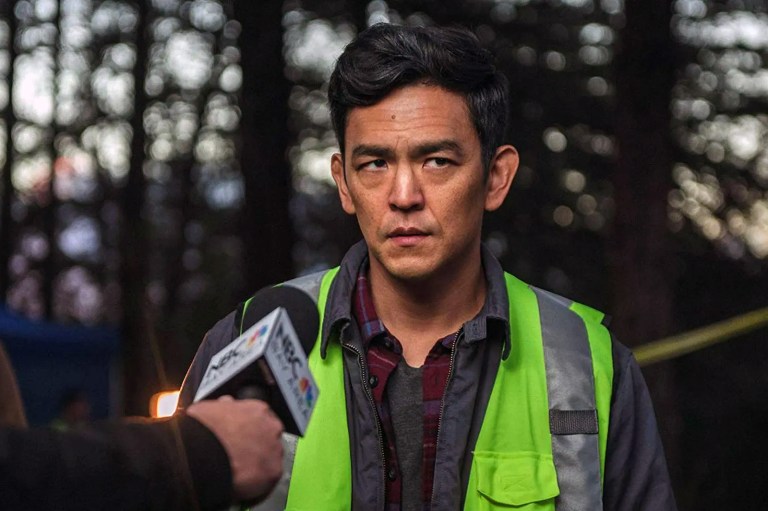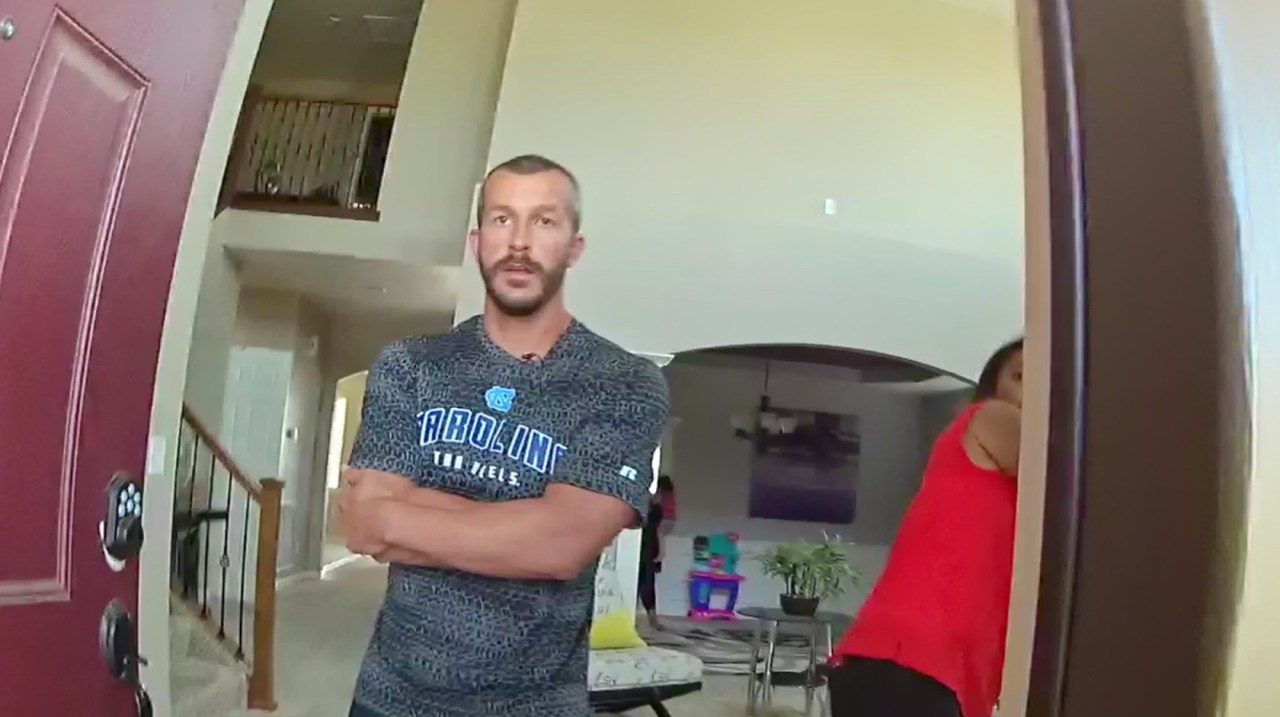
Watch Chris Watts Give A Chilling Speech About ‘Relationship Deterioration’
Notably in the presentation Chris Watts remarks that a relationship could end, "hypothetically", “if you met someone at work.”
After winning an award for the popular Netflix true crime doc American Murder: The Family Next Door, director Jenny Popplewell explained to Televisual how she became interested in the Watts family story and conceived of a documentary told through social media. Popplewell watched the tragedy play out in real time. She was struck by how “normal” Chris and Shanann seemed and then by the abundance of footage of Chris crying crocodile tears. When body cam footage of the investigation was released Popplewell knew she had a story worth telling to a bigger audience:
“It suddenly struck me how this felt like the first time a crime had been captured entirely on camera. There have been some amazing archive documentary portraits. But this felt like it would be an unfolding narrative.”
The documentary was the first to integrate so much content and footage from police body cams, the neighbor’s Ring doorbell, Shanann’s social media posts, and media interviews. It felt like American Murder: The Family Next Door added a layer of reality and context to the usual gruesome true crime documentary fare. Shanann, Bella and Celeste became three-dimmensional humans, not just victims. The more we as an audience sat and watched Shanann and her normal life, the less we could say “that couldn’t happen to me” and rationalize abuse and murder as something that happens to “other” people.
Popplewell interviewed Shanann’s family, telling them “We wanted Shanann to be at the centre of this story – not the murderer, as is the case with so many true crime films – and they were happy about that.” Shanann’s family gave the director Shanann’s laptop and phone and later encouraged viewers to watch the documentary, saying they were happy Shanann was able to tell at least part of the story in her own words via her social media posts. Importantly, the documentary also presented Shanann as a real person, not just “the perfect victim” as many true crime docs tend to do, “All too often, victims in crime documentaries when they do have a moment are presented as having lit up a room, or having the best smile, or being sorely missed. So it was important to show her in an honest, multi-dimensional way.”
The documentary also delved into what little social media Chris Watts had, which was somehow much more damning than what Shanann shared: “That is Chris on his own YouTube. He closed his Facebook page a few weeks before the crimes because he doesn’t want to give himself away. But his YouTube is left up. And it’s some kind of like seminar, it’s a little speech or presentation that he’s doing for work, for public presentation. And he’s chosen to do it on relationship deterioration and repair. But it’s like listening to an 11-year-old’s idea of what a relationship is. This man has no depth, no emotional intelligence.”
Notably in the presentation Chris Watts remarks that a relationship could end, “hypothetically”, “if you met someone at work.”
Popplewell says it’s exactly this mismatch in emotional intelligence that led Chris to believe his only option was not talking to his partner or even leaving her, but annihilation: “[Shanann] says in a text message to a friend that she’s written him a letter because he doesn’t talk about his feelings, and it’ll be better if he writes them down. He never wrote the letter back… He killed her instead.”
One scene that didn’t make the doc was a clip from the couple’s wedding where they played a variation of “The Newlywed Game”. As Popplewell told MovieMaker:
“They sit back-to-back, they’ve got a paddle each, and [the DJ] says, who kissed who first, and they put up the paddle, and it’s Chris. And that’s corroborated with her story. You know, she’s a divorcee. He’s pursued her. She’s done with men. She doesn’t just want another relationship. She’s pushing him away. But he wears her down and she decides, okay, he’s the one for me,” Popplewell said.
“And then the next question is, ‘Who said I love you first?’ I was expecting it to be Chris again. But it’s not. They put the paddle up, and it was Shanann. I just thought, exactly. This is who she was. She was someone who wore her heart on her sleeve. And she if she felt something she told you, she was so open with her friends. She’s open with her family. She was open with Chris and he was not. And yeah, she loved him. When she loved him, she told him. And when there was trouble, she begged him to tell her why. And he could not offer that courtesy.”
The director said her goal was to reach people who have been desensitized by watching true crime shows. She adds that what people should take away from American Murder: The Family Next Door is that “We need to refocus on familicide, femicide, violence against women. We need to remember these are real stories about real people, not just numbers. And we need to be aware they are an ever-growing problem everywhere, in every country, and in ordinary families.”

